Rare Early 18th Century Queen Anne Walnut Stick Barometer, Circa 1705-1710
Sold
Follow Us
Rare Early 18th Century Queen Anne Walnut Stick Barometer, Circa 1705-1710
A fine and rare Queen Anne walnut barometer, unsigned, but exhibiting all the stylistic characteristics of the first quarter of the 18th century, circa 1705-1710. Made in the manner of John Patrick, the barometer features elaborately engraved silvered brass register plates.
The dual scales, designed to indicate air pressure, can be adjusted vertically to account for different altitudes. The right-hand scale includes a vernier for precise readings and also serves as a setting hand, while the left-hand scale is marked for summer readings, and the right for winter. The Torricelli tube is concealed behind a large, half-round walnut cover.
The cistern, fitted with a leather bottom, features a minuscule hole to allow air pressure changes to register accurately. The barometer’s arched top is adorned with three ball finials on bases, and the area above the scales is finely pierced and flanked by delicate twist columns, which rest on a moulded support. Two shaped drop finials, suspended beneath the support and aligned with the columns, enhance the instrument’s elegant design.
Note: The suspension hole in the pediment is original and consistent with barometers from this period.
The barometer has been entirely conserved and is presented in excellent condition.
Condition
Good. Wear consistent with age and use.
Dimensions
Height: 100 cm (39.5 inches).
Literature
E. Banfield, Barometers, Stick or Cistern Tube, Trowbridge, 1985, pp. 27-35.
N. Goodison, English Barometers 1680-1860, Woodbridge, 1977, pp. 49 (Plate 8), 201 (Plate 133).
PREVIOUSLY SOLD
No Results Found
The page you requested could not be found. Try refining your search, or use the navigation above to locate the post.
No Results Found
The page you requested could not be found. Try refining your search, or use the navigation above to locate the post.
YOU MAY ALSO LIKE
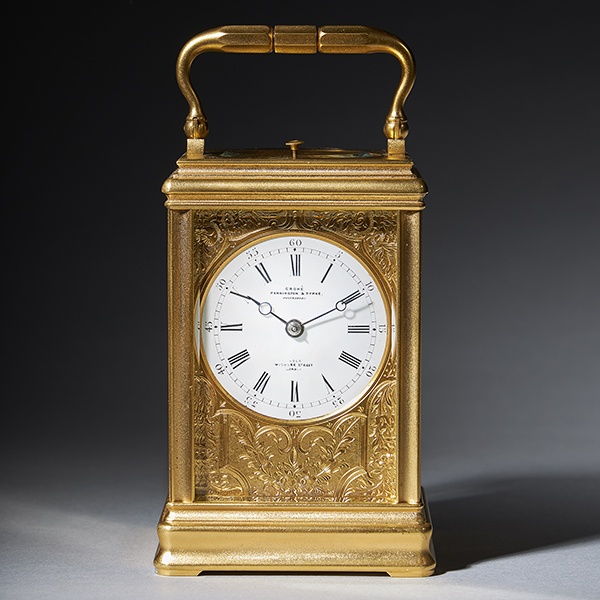
19th Century Repeating Gilt-Brass Carriage Clock by the Famous Drocourt
19th Century Repeating Gilt-Brass Carriage Clock by the Famous Drocourt £5,600 Follow Us19th Century Repeating Gilt-Brass Carriage Clock by the Famous Drocourt A superb repeating carriage clock with a gilt-brass gorge case by the famous maker...
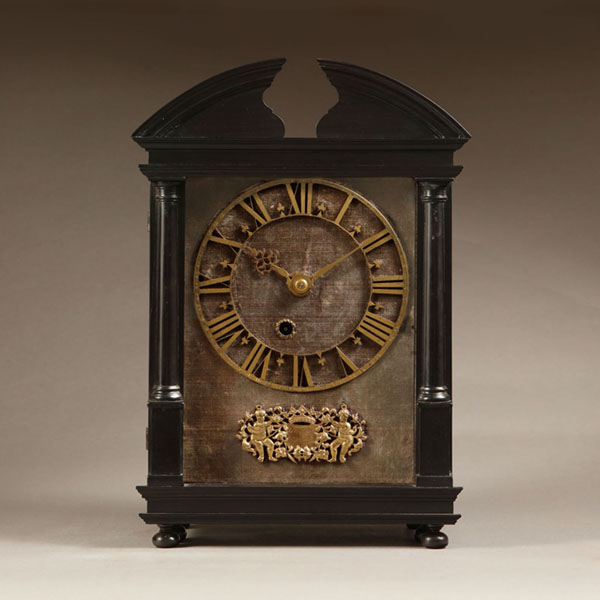
17th-Century Hague Clock Signed by Pieter Visbagh, circa 1675
Small 17th Century Hague clock made c. 1675 by Pieter Visbagh, who was apprenticed by Salomon Coster. The latter made the first pendulum clock according to the instructions of Christiaan Huygens, the internationally renowned scientist who developed the idea of applying a pendulum to a clock movement.
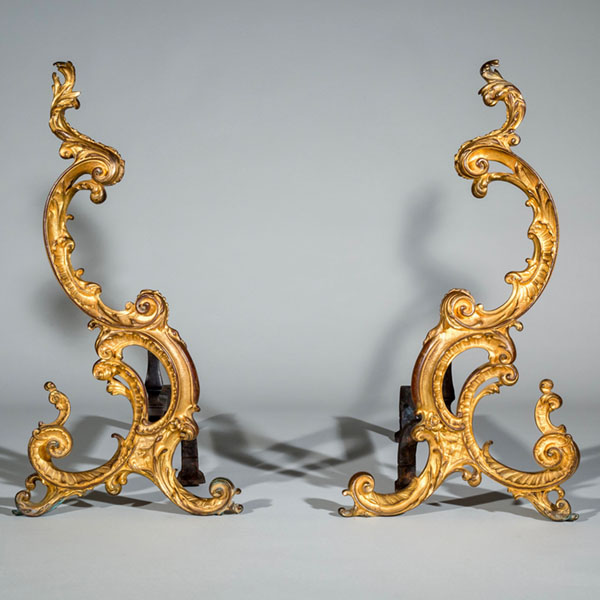
Pair of 18th-Century English Rococo Gilt Bronze Andirons or Firedogs
An exceptional pair of 18th century English Rococo gilt bronze andirons or fire dogs.
The bold shape of these andirons relate to designs of Thomas Johnson (1714–1778), one of London’s pioneers of the ‘Modern’ or French style, later known as Rococo.
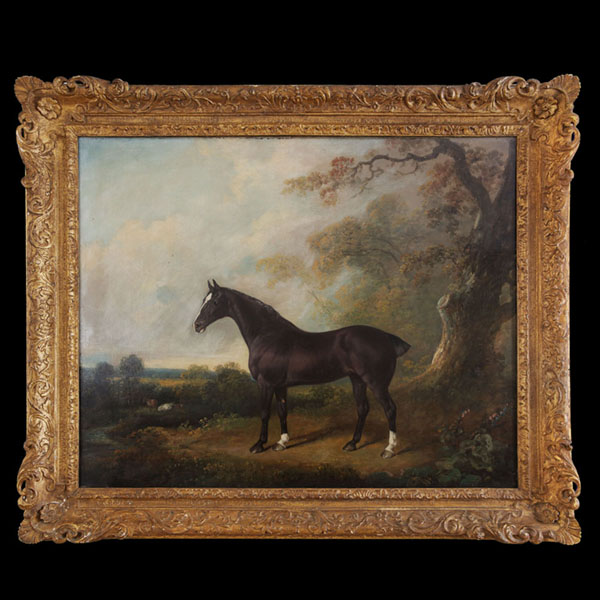
Oil Painting of a Horse Standing Proud in Woodland
Fine Art – Charles Henry Scwanfelder (1774-1837). Signed C H Schwanfelder Pinx and dated 1825. An exceptional portrait of a horse standing proud in woodland, in front of a tree-lined vista incorporating cows residing by a stream.
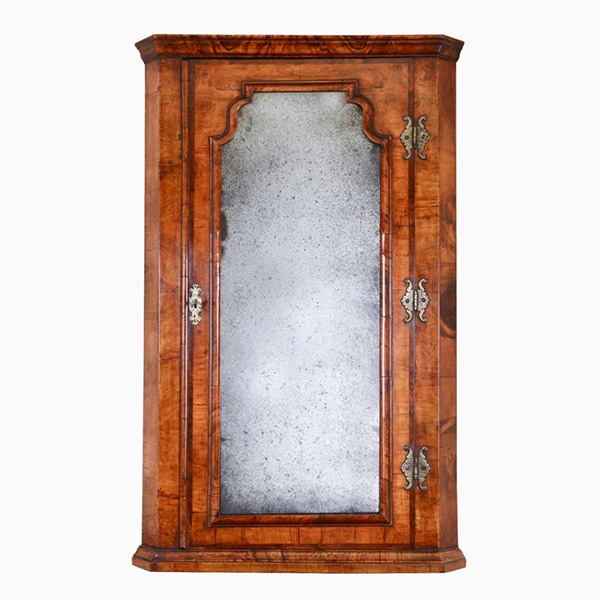
Queen Anne Walnut Corner Cupboard with Bevelled Mirror Plate
A truly remarkable find in original condition. To the door a shaped soft bevelled mirror plate is framed by a cross-grain molding of typical queen Anne design which is further cross-banded, feather-banded and edged to the opening with a single de-molding.

19th Century Repeating Gilt-Brass Carriage Clock by the Famous Drocourt
19th Century Repeating Gilt-Brass Carriage Clock by the Famous Drocourt £5,600 Follow Us19th Century Repeating Gilt-Brass Carriage Clock by the Famous Drocourt A superb repeating carriage clock with a gilt-brass gorge case by the famous maker...

17th-Century Hague Clock Signed by Pieter Visbagh, circa 1675
Small 17th Century Hague clock made c. 1675 by Pieter Visbagh, who was apprenticed by Salomon Coster. The latter made the first pendulum clock according to the instructions of Christiaan Huygens, the internationally renowned scientist who developed the idea of applying a pendulum to a clock movement.

Pair of 18th-Century English Rococo Gilt Bronze Andirons or Firedogs
An exceptional pair of 18th century English Rococo gilt bronze andirons or fire dogs.
The bold shape of these andirons relate to designs of Thomas Johnson (1714–1778), one of London’s pioneers of the ‘Modern’ or French style, later known as Rococo.

Oil Painting of a Horse Standing Proud in Woodland
Fine Art – Charles Henry Scwanfelder (1774-1837). Signed C H Schwanfelder Pinx and dated 1825. An exceptional portrait of a horse standing proud in woodland, in front of a tree-lined vista incorporating cows residing by a stream.

Queen Anne Walnut Corner Cupboard with Bevelled Mirror Plate
A truly remarkable find in original condition. To the door a shaped soft bevelled mirror plate is framed by a cross-grain molding of typical queen Anne design which is further cross-banded, feather-banded and edged to the opening with a single de-molding.








